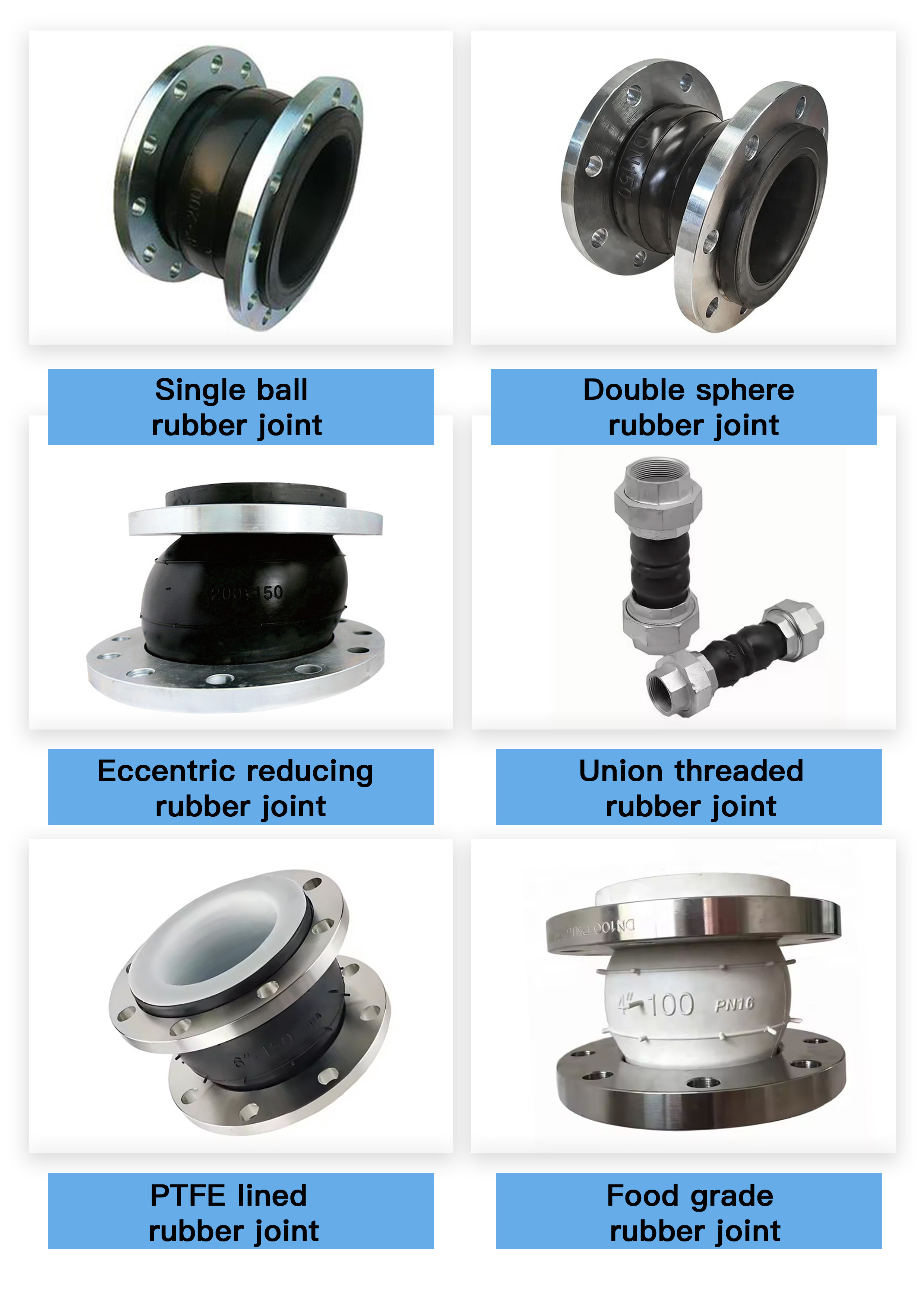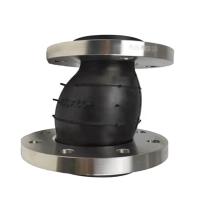Product Introduction
Thread double ball rubber soft joints are commonly known as flexible rubber joints, the main materials
are neoprene, natural rubber and EPDM rubber, and the rubber soft
joints can be automatically extended due to natural changes in
weather. Threaded connectors can be flexible rubber joints, which
can be connected by any shock absorbing throat, etc., and are a
pipe joint with high elasticity, high air tightness, medium
resistance and weather resistance. The threaded rubber soft joint
makes use of the elasticity, high air tightness, medium resistance,
weather resistance and radiation resistance of rubber, and is made
of polyester cord with high strength and strong cold and heat
stability after being diagonally compounded with it, and then
vulcanized by high-pressure and high-temperature molds.
Product material selection
The materials of threaded rubber joints include carbon steel, 304 stainless steel, 316 stainless steel and
other metal materials, as well as natural rubber, EPDM rubber,
nitrile rubber, butyl rubber and other rubber materials. The
selection of these materials depends on the nature of the fluid in
the pipeline, such as acid resistance, alkali resistance, oil
resistance, heat resistance and other requirements
Product structure composition
The threaded rubber joint is composed of an inner rubber layer, a multi-layer nylon cord
reinforcement, an outer rubber layer and a metal union joint. Its
connection method is threaded connection, which is usually called
threaded rubber joint, fan coil unit rubber soft connection, thread
buckle rubber soft connection, etc.
Product parameters
| Nominal diameter | Length(mm)
| Axial displacement(mm) |
Lateral displacement
(mm)
|
| mm | Inch | Elongation | Compression |
| 15 | 1/2 | 200 | 5~6 | 22 | 22 |
| 20 | 3/4 | 200 | 5~6 | 22 | 22 |
| 25 | 1 | 200 | 5~6 | 22 | 22 |
| 32 | 1 1/4 | 200 | 5~6 | 22 | 22 |
| 40 | 1 1/2 | 200 | 5~6 | 22 | 22 |
| 50 | 2 | 200 | 5~6 | 22 | 22 |
| 65 | 2 1/2 | 265 | 8~10 | 24 | 24 |
| 80 | 3 | 285 | 8~10 | 24 | 24 |
Different types of rubber joints

How to install the product
1. Preparation: Make sure the pipes and joints are clean, and check if the rubber
seals are intact.
2. Determine the location: Determine the installation location of the joint according to the
position of the connected pipe or equipment, and measure the
diameter of the pipe as needed.
3. Install the rubber seal: Place the rubber seal at the pipe port or equipment connection.
Make sure the seal completely covers the connection and is not
twisted or damaged.
4. Connecting joints: Align the threads of the wire mouth part of the joint with the
threads at the connection of the pipe or equipment, and tighten
until it is fully connected. If needed, you can use a wrench or
other tool to tighten it, but be careful not to use excessive force
to avoid damaging the joints or pipes.
5. Inspection and test: After the installation is completed, you should check whether the
joint is firm and rule out water leakage. In the case of a water
supply system, a hydrostatic test can be performed to ensure that
the fitting is completely sealed.
Product installation precautions
1. Visual inspection: Before installation, the appearance of the rubber joint should be
carefully checked to ensure that there are no obvious breakages,
cracks or other defects. The thread part should be intact, and
there should be no rust or other foreign matter at the thread
fastener.
2. The use of threaded sealing tape: During the installation process, the threaded sealing tape is
first wound around the threaded part of the joint, which usually
needs to be wound 3 to 4 times to ensure that each circle is evenly
fitted and avoid leakage. The function of the sealing belt is to
prevent small leaks at the joint connection and enhance its sealing
performance.
3. Tighten evenly: Use a wrench to align the threaded part of the threaded rubber
joint with the threaded interface of the pipe, and then rotate it
slowly. Do not use too much force to prevent damage to the threads
or deformation of the joint. During the rotation process, it is
necessary to keep the thread smooth to prevent the occurrence of
jamming.
4. Avoid over-tightening: Although the joint needs to be secure, over-tightening may cause
the rubber joint to be deformed or the thread to be damaged, which
in turn will affect the sealing effect.
5. Adjust the angle of the joint: After the installation, the angle of the threaded rubber joint can
be adjusted according to the actual needs to ensure that the
pipeline connection is stable and tight. If the position of the
joint is found to be unsatisfactory during the installation
process, it should be adjusted in time to avoid connection failure.
Workshop display

Why choose us?
1. We have a strict quality control system and regular stress
testing, and third-party testing can be carried out if required
2. We deliver fast
3. Competitive factory price
4. Full technical support from drawing design to after-sales
5. Product customization/packaging customization/pattern and logo
customization
6. Accept small quantity orders/OEM orders
7. Our customer service is available 24 hours a day
8. We have more than 20 years of rich experience in this industry
9. Our products have been exported to 35 countries and have been
well received











